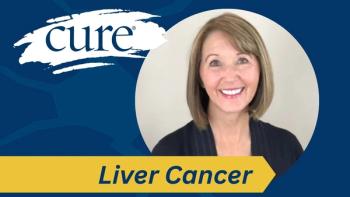
Veteran, Colon Cancer Survivor Explains Importance of PACT Act
U.S. Army Reserve Veteran and stage 3 colon cancer survivor discussed the significance of the 2022 passage of the PACT Act and what it means for veterans facing cancer.
Dan Nevins, a U.S. Army Reserve veteran, is a bilateral, below-knee amputee living with a traumatic brain injury as a result of his service in Iraq. But even after those life-changing injuries, Nevins found a silver lining.
“Being deployed and getting blown up and then having such significant injuries with missing both legs and a brain injury, the one saving grace was ‘Oh, well, at least nothing happened to my core,’ and it sort of made walking easier again,” Nevins told CURE®.
In November 2021, Nevins received a diagnosis of stage 3 colon cancer. Treatment followed via a colon resection, then there were complications. “An anastomosis, where they hooked my colon back together had come apart in my body,” Nevins said. “And so, I had emergency surgery, I was in the ICU for a while, and months and months and months of recovery. Finally, when I healed enough, I was able to get chemotherapy and get all my numbers under control.”
‘The most likely culprit.’
“It turns out that the most likely culprit for my cancer was exposure to toxins downrange,” Nevins said. “Because I had an impeccable diet, I was in really good shape, I’m a yoga teacher, I was very in tune with my body. And I was feeling great when I got this diagnosis.”
As of September 2022, the U.S. Department of Veterans Affairs (VA) reported that it was caring for more than 450,000 veterans with cancer and making approximately 43,000 new cancer diagnoses annually.
READ MORE:
President Joe Biden signed the bipartisan Sergeant First Class Heath Robinson Honoring our Promise to Address Comprehensive Toxics (PACT) Act into law last year, with the White House calling it “the most significant expansion of benefits and services for toxic exposed veterans in more than 30 years.”
More than 4.1 million veterans received free toxic exposure screenings through the VA, with the government processing nearly half a million PACT Act claims and delivering more than $1.85 billion in PACT Act-related benefits to veterans and survivors, including $215 million in benefits to veterans with cancer, during the first year of the PACT Act, the White House stated.
Under the PACT Act, all gastrointestinal cancers are considered toxic exposure presumptive conditions — meaning veterans do not have to prove that the cancer started during or worsened because of their military service — for veterans from the Gulf War and post-9/11 eras, such as Nevins’.
“I was talking to my surgeons at (the) Mayo (Clinic) in the early part of the diagnosis before I had the surgery, and I was asking, ‘Well, what could this be from?’ and they said there’s really no way to know — but then they saw my legs,” Nevins said. “I remember them looking down at my legs, I wear shorts a lot and there’s two prosthetics, and one of the surgeons said, ‘You were injured in combat, weren't you?’ And I said, ‘Yes.’ … This is right around the time the dialogue around toxic exposure started to rise to the surface, and I guess they were paying attention to that, and he said, ‘Considering your environmental factors, I wouldn't be surprised if it was the toxins you were exposed to’ — and he actually used the word toxins — ‘during your time in service that could very well be the cause.’ Because so much time had gone by, that’s when I started to remember all those days of just driving through, the burn pits, and God knows what else you’re exposed to.”
Burn pits, according to the Associated Press, were utilized in Iraq and Afghanistan for the disposal of material including chemicals, medical equipment, human waste, cans, tires and plastics, and before the PACT Act, 70% of disability claims involving exposure to the pits were denied by the Department of Veterans Affairs.
“Now knowing that that was probably it, I can look back to my time in service and go, ‘Well yeah, I just remember driving through these thick clouds of burn pit (smoke) almost every day when we were headed out to do missions,’” Nevins said. “When you’re in that moment and you’re driving through this disgusting cloud of filth, you’re like, ‘This can't be good, right?’ As you’re driving through like this, it’s burning your lungs, it’s in your mouth, you’re covering your face. And still, some of us sometimes even put our gas masks on, just to get through that one little area.
“But in that moment, when you might actually get shot out or blown up, that becomes something you just never really think about again. And now here you are two decades later, or here I am, two decades later, and then that it started to crystallize, like, ‘Well, yeah, I think it makes a little bit of sense now.’”
Nevins, now an ambassador for the Wounded Warrior Project and an advocate for PACT Act Awareness, spoke with CURE® about the landmark legislation and what it means for veterans.
Transcript
Wounded Warrior Project was a lifesaver for me. I’m a little bit different. I’m already 100% service-connected disabled, missing both legs and having a brain injury. So, it wasn’t like, ‘Oh, I need to go get compensation or benefits,’ it was more like I needed to know what to do. So, I reached out to Wounded Warrior Project at this sort of diagnosis point and said, ‘Hey, because my surgeons are telling me this is probably due to my service, is there something that I need to do?’ And at that point, the PACT Act was in process, but it wasn’t actually codified yet and put into law. And so immediately the benefits team said, ‘We’re going to put you on this list of intent to file so as soon as this is live,’ you're basically saying I meet all these criteria and then so I’m going to file a claim.
And for me specifically that claim didn’t change my VA compensation, I had already had access to VA health care. But for a lot of people, I mean, a large group of people, they don't have access to the VA health care, because they might have done four years in the Army, and then got out and felt fine. And then said, 'I don't need the VA, I'm not service-connected disabled in any way. Everything works, everything functions.'
And now, you go a decade or more later and then they're getting these crazy cancers and younger and younger folks are getting these cancers. And so when that link was established, and it’s got to be significant if you take a massive government entity and they say, 'If you have any of these types of cancers’ — (and) the list is really long, all reproductive cancers, GI cancers, so many different types of cancer — and they say, ‘If you have these, and you happened to serve in any of these areas, then we automatically presume that it’s because of the toxic exposure in those areas.’ They’re not even trying to fight it. They’re saying like, ‘Yeah, we know.
And for people that already aren’t involved in the VA system, or don’t have benefits claims for disabilities related to their service, this was the chance for them. Many, many people in the United States, and then a lot of veterans, don’t have access to healthcare and can’t afford it. And so, this passing of the PACT Act, those people now have access to amazing healthcare, treatment, and compensation, if they’ve already paid for treatment, to my understanding.
For people more like me, if they happen to be watching, like, ‘Well, I don’t need to get that, I’m already in the healthcare system, I’m good.’ The difference is now that this cancer is service-connected for me, (which) means it’s a result of my time in uniform, if I actually succumb to this disease, which hopefully that’s not the case, but then my family is entitled to compensation and benefits for the rest of their lives. And so that is, I think, foundationally important, really, so everyone that’s impacted has some benefit at the end of the day.
Transcript has been edited for conciseness and clarity.
For more news on cancer updates, research and education, don’t forget to




